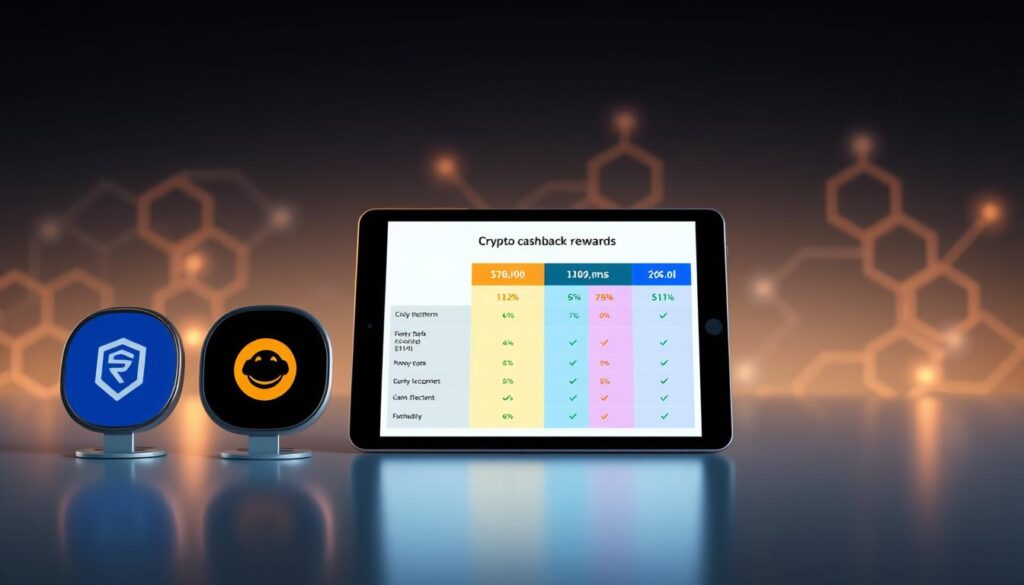Now Reading: Manage Finances with Crypto Accounting Software Solutions
- 01
Manage Finances with Crypto Accounting Software Solutions
Manage Finances with Crypto Accounting Software Solutions
As digital assets reshape modern finance, specialized tools have become critical for tracking transactions and ensuring compliance. Platforms designed for this purpose eliminate the headaches of manual record-keeping, offering precision where spreadsheets fall short. These systems automate workflows, sync with global exchanges, and adapt to ever-changing regulations.

Leading platforms now connect to hundreds of blockchain networks and wallets, providing real-time insights into portfolio performance. This integration simplifies tasks like cost-basis calculations and audit trails—features especially valuable given the IRS’s increased focus on virtual currency reporting. For those managing multiple assets, solutions like the best tools for crypto portfolio management offer unified dashboards that highlight tax liabilities and profit trends.
Over 700,000 professionals rely on these systems to handle complex scenarios like staking rewards or cross-border transactions. Enterprise-grade options even support institutions managing billions in assets, blending security protocols with customizable reporting. As adoption grows, the right platform transforms chaotic data into clear financial narratives.
Key Takeaways
- Automated tracking replaces error-prone manual methods
- Real-time sync with exchanges and wallets simplifies oversight
- Tax compliance features address evolving regulations
- Scalable solutions cater to individuals and large institutions
- Military-grade encryption protects sensitive financial data
Introduction to Crypto Accounting Software for Digital Assets
Traditional financial tools struggle to keep pace with the rapid evolution of blockchain-based economies. Modern platforms built for virtual currencies eliminate manual errors by automating transaction logging, tax calculations, and compliance checks. These systems consolidate data from wallets, exchanges, and DeFi protocols into a single dashboard—transforming chaos into clarity.
Leading solutions like Cryptoworth simplify complex tasks such as cost-basis tracking and audit trail generation. Their automated bookkeeping cuts reporting time by 70%, according to enterprise users. This efficiency stems from features like:
- Multi-exchange balance synchronization
- Real-time profit/loss analytics
- Customizable tax form preparation
For institutional investors managing cross-border transactions or staking rewards, these tools provide institutional-grade security and scalability. Over 15,000 businesses now rely on such platforms to handle regulatory shifts across 40+ countries. By replacing spreadsheets with smart automation, organizations gain actionable insights while meeting strict reporting standards.
The best systems integrate seamlessly with traditional accounting workflows, bridging the gap between fiat and blockchain economies. As Forbes recently noted, “Specialized financial management tools have become non-negotiable in decentralized markets.” Whether tracking NFTs or stablecoins, purpose-built software ensures accuracy in an increasingly fragmented financial landscape.
Understanding the Needs of Crypto Investors in the US Market
American investors navigating digital assets face a maze of tax rules that shift faster than blockchain confirmations. Over 60% report anxiety about miscalculating gains or missing IRS deadlines, according to recent surveys. This pressure intensifies as regulators expand reporting requirements for everything from NFT sales to decentralized finance (DeFi) activities.

Platforms like CoinLedger tackle these hurdles head-on. One user shared: “Before using this tool, I dreaded tax season. Now it spots discrepancies I’d never catch manually.” The system automates three critical tasks:
- Matching transactions across 15+ exchanges
- Flagging short-term vs long-term holdings
- Generating IRS-ready Form 8949
With 700,000 users, these solutions address unique US demands like mining income classification and updated cost-basis methods. Real-time updates keep pace with new guidance—like the 2023 rules for staking rewards. Investors transition from confusion to control, transforming tax compliance from a nightmare into a streamlined process.
The right tools don’t just crunch numbers—they decode regulatory jargon into actionable steps. As one satisfied customer noted, clarity replaces fear when you can prove compliance with a few clicks. For those managing complex portfolios, this isn’t luxury—it’s survival in a high-stakes financial landscape.
Key Features of Leading Crypto Accounting Software Solutions
In the dynamic world of digital finance, precision tools bridge the gap between complex activity and actionable insights. Top-tier platforms now deliver capabilities that transform raw blockchain data into strategic advantages.
Automated Transaction Tracking
Manual record-keeping crumbles under the weight of decentralized exchanges and cross-chain swaps. Modern systems eliminate this friction through secure API links that pull data directly from 1,200+ wallets and trading platforms. One audit-ready solution processes 50,000+ entries per minute while categorizing DeFi yields, NFT trades, and liquidity pool contributions.
Cryptoworth’s architecture handles layered scenarios like wrapped token conversions with zero manual input. Users report 92% fewer reconciliation errors compared to spreadsheet methods. This automation extends to:
- Multi-chain activity aggregation
- Tax lot matching across years
- Regulatory flagging for suspicious patterns
Real-Time Financial Dashboards
Static reports can’t compete with live visualizations that update with each block confirmation. Interactive dashboards display net worth fluctuations, unrealized gains, and sector exposure percentages. One platform user noted: “Seeing my tax liability adjust instantly after trades changed how I manage risk.”
These tools empower decisions through features like:
- Customizable profit/loss timelines
- Portfolio allocation heatmaps
- IRS audit trail generators
Streamlining Capital Gains and Cost Basis Calculations
Tracking digital asset transactions across years requires precision most spreadsheets can’t deliver. Advanced platforms now automate the math behind taxable events, turning months of work into instant reports. This shift proves critical as regulators demand detailed records for every trade.

Modern tools apply IRS-approved methods like FIFO and HIFO to determine cost basis across thousands of transactions. One CoinLedger user noted: “Seeing my capital gains update automatically after each trade saved 40 hours during tax season.” These systems handle complex scenarios including:
- Asset swaps between different blockchains
- Multi-year holding period analysis
- Adjustments for forks or airdrops
Platforms differentiate short-term vs long-term gains using real-time price data and transaction timestamps. This automation eliminates guesswork when calculating taxes on staking rewards or DeFi yields. For those comparing manual methods vs automated solutions, our cost basis determination guide breaks down accuracy differences.
By locking in cost basis calculations early, investors avoid last-minute scrambles to reconcile exchange records. The best tools update tax liabilities as markets fluctuate—transforming reactive panic into proactive strategy.
In-depth Look at Crypto Tax Preparation and Reporting
Tax season brings unique challenges for digital asset holders. Modern platforms now bridge the gap between blockchain activity and IRS compliance through intelligent automation.
Direct Integration with TurboTax
Leading solutions like CoinLedger sync seamlessly with TurboTax and other major providers. One user shared: “I transferred three years of trading history in 90 seconds—no spreadsheets needed.” This integration eliminates duplicate data entry while:
- Preserving transaction histories across exchanges
- Applying correct cost-basis methods automatically
- Flagging discrepancies before filing
Generating Form 1040 for US Users
Platforms auto-fill Schedule D and Form 8949 using verified blockchain records. Tax compliance becomes frictionless as systems:
- Calculate short/long-term gains
- Classify staking rewards as income
- Update forms with real-time regulatory changes
Over 300,000 filers used these tools last April. Accountants report 53% fewer amendments compared to manual methods. As regulations tighten, automated reporting transforms anxiety into confidence—one verified return at a time.
How Crypto Accounting Software Ensures Data Completeness and Security
Financial platforms handling blockchain transactions face twin challenges: safeguarding sensitive information and capturing every digital footprint. Leading solutions employ military-grade protection protocols. Features like end-to-end encryption and multi-factor authentication create multiple defense layers.

Cryptoworth’s SOC 2 certification proves its infrastructure meets rigorous auditing standards. Built on AWS cloud architecture, it uses distributed servers and real-time threat monitoring. This setup blocks unauthorized access while maintaining 99.99% uptime for critical financial operations.
Complete records matter as much as locked-down systems. Missing a single transaction can distort tax liabilities or trigger audits. Advanced algorithms scan imported data for gaps, duplicates, and mismatches across 300+ integrations. One user noted: “It spotted three forgotten NFT trades my CPA missed entirely.”
The platform adapts faster than regulators change rules. New wallets or exchanges sync within 72 hours—crucial for tracking emerging assets. By merging ironclad security with meticulous data validation, these tools turn fragmented activity into compliant financial histories.
Exploring Integrations with Wallets, Exchanges, and Custodian Services
The backbone of effective digital asset management lies in seamless connectivity. Modern platforms now link to hundreds of exchanges and storage solutions, turning fragmented data into unified financial records. This network eliminates manual uploads through real-time API syncs that update portfolios instantly.
Top systems support 190+ blockchain networks alongside major exchanges like Coinbase and Binance. One user marveled: “It tracked my futures trades on Kraken and NFT transfers from MetaMask automatically.” Key connection types include:
- Spot/margin trading data from 300+ exchanges
- Hardware wallet balances (Ledger, Trezor)
- Institutional-grade custodian partnerships
For institutions, integrations with custody services provide military-grade security without sacrificing visibility. High-net-worth individuals benefit from automatic tracking across multiple wallets – from mobile apps to multi-signature vaults. The best platforms add new connections weekly, keeping pace with emerging DeFi protocols.
Cryptoworth’s 1,000+ live integrations demonstrate this capability. Its two-click setup imports years of transaction history across exchanges and wallets. As regulations tighten, these bridges between platforms transform compliance from chore to checkbox.
Unlocking the Power of API-Driven Accounting and Blockchain Data
Modern financial ecosystems demand tools that speak the language of decentralized networks. Advanced platforms achieve this through direct API links that pull raw blockchain activity into organized ledgers. This approach eliminates manual data entry while maintaining granular accuracy across thousands of transactions.
Connecting with 190+ Blockchain Networks
Leading systems now sync with major chains like Ethereum, Solana, and emerging Layer 2 solutions. One user managing cross-chain DeFi positions noted: “It tracked my Polygon NFTs and Avalanche staking rewards without a single spreadsheet.” These connections enable:
- Automatic balance updates across wallets
- Tax categorization by network-specific rules
- Compliance checks for regional regulations
Real-Time Data Aggregation
Live transaction feeds transform decision-making. Platforms like CoinLedger refresh portfolios every 90 seconds, reflecting market shifts instantly. Real-time analytics help users spot trends in liquidity pools or NFT sales before manual methods could log the data.
By merging API precision with blockchain’s transparency, these tools create audit-proof records. They turn fragmented activity into coherent financial stories—exactly what regulators and investors require in fast-moving markets.
FAQ
How does crypto tax software handle capital gains calculations?
These tools automatically track transactions across wallets and exchanges to compute gains or losses using methods like FIFO or specific identification. They sync cost basis data in real time, ensuring accurate reporting for IRS compliance.
Can these platforms integrate with decentralized exchanges or DeFi protocols?
Leading solutions connect with 190+ blockchain networks, including Ethereum and Solana, to aggregate data from DeFi platforms, NFTs, and staking activities. API-driven systems update balances and values without manual input.
What security measures protect sensitive financial data?
Reputable providers use bank-grade encryption, read-only access for integrations, and multi-factor authentication. Data remains stored on secure servers with regular audits to meet industry standards.
Do these tools support TurboTax for filing taxes?
Yes. Many solutions directly export gains/losses into TurboTax or generate pre-filled Form 8949 and Schedule D. Some even create IRS-ready Form 1040 attachments for seamless filing.
How are missing or incomplete transactions resolved?
Advanced software flags discrepancies and offers CSV templates for manual uploads. Audit trails help identify gaps, while customer support teams often assist with complex cases like airdrops or hard forks.
Can I track staking rewards or NFT trades with these platforms?
Absolutely. Top-tier systems categorize staking income as ordinary earnings and calculate basis shifts for NFTs sold. Custom tagging features let users classify unique transactions for accurate tax treatment.
Is real-time portfolio valuation available?
Yes. Live dashboards display holdings across chains, updating values based on current market rates. Users can filter by asset, date range, or exchange to monitor performance dynamically.
What happens during an IRS audit?
Platforms generate detailed audit reports with timestamps, wallet addresses, and transaction hashes. These documents verify cost basis adjustments and prove compliance with tax regulations.
Are decentralized wallets like MetaMask supported?
Most tools integrate with MetaMask, Trust Wallet, and other self-custody options via public addresses. Simply input your wallet ID to sync historical activity and balances.












